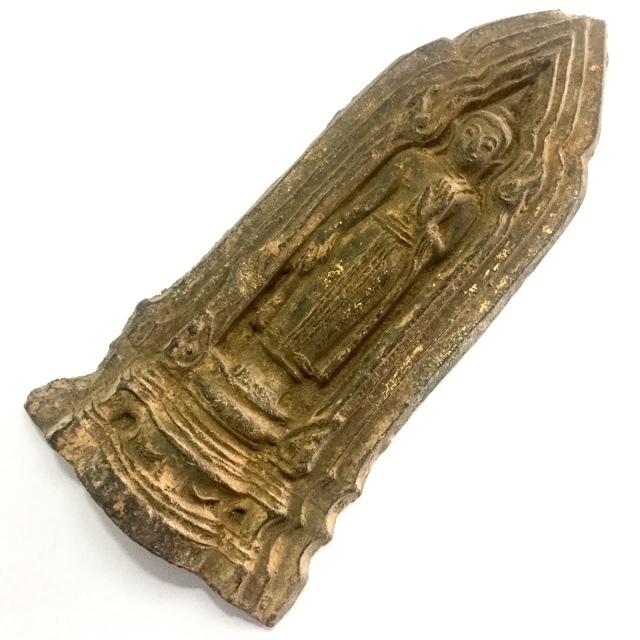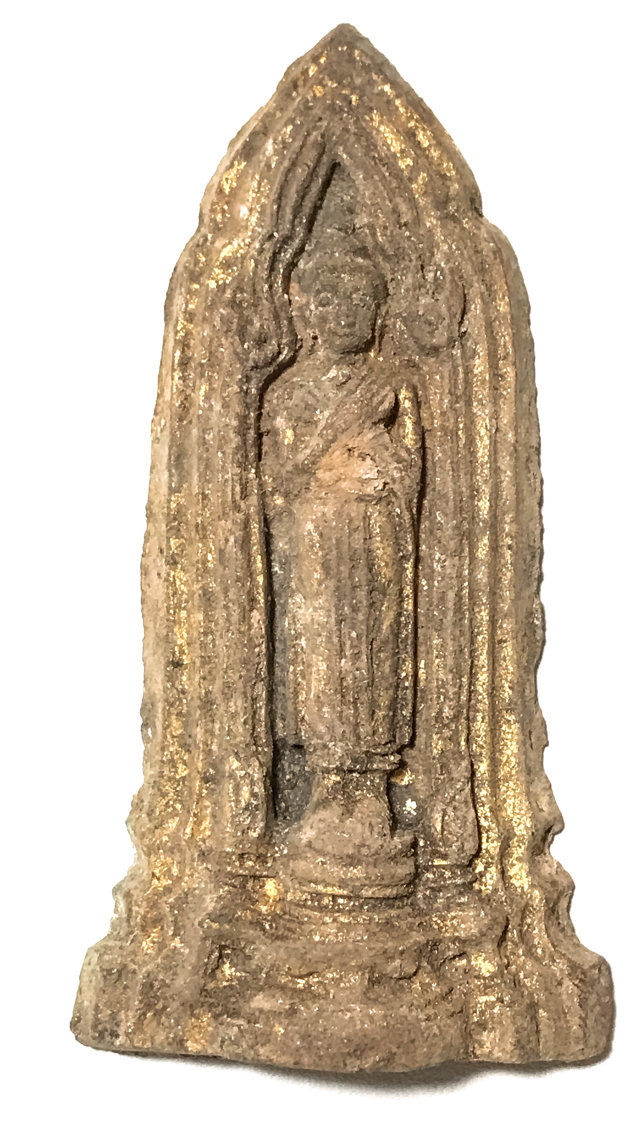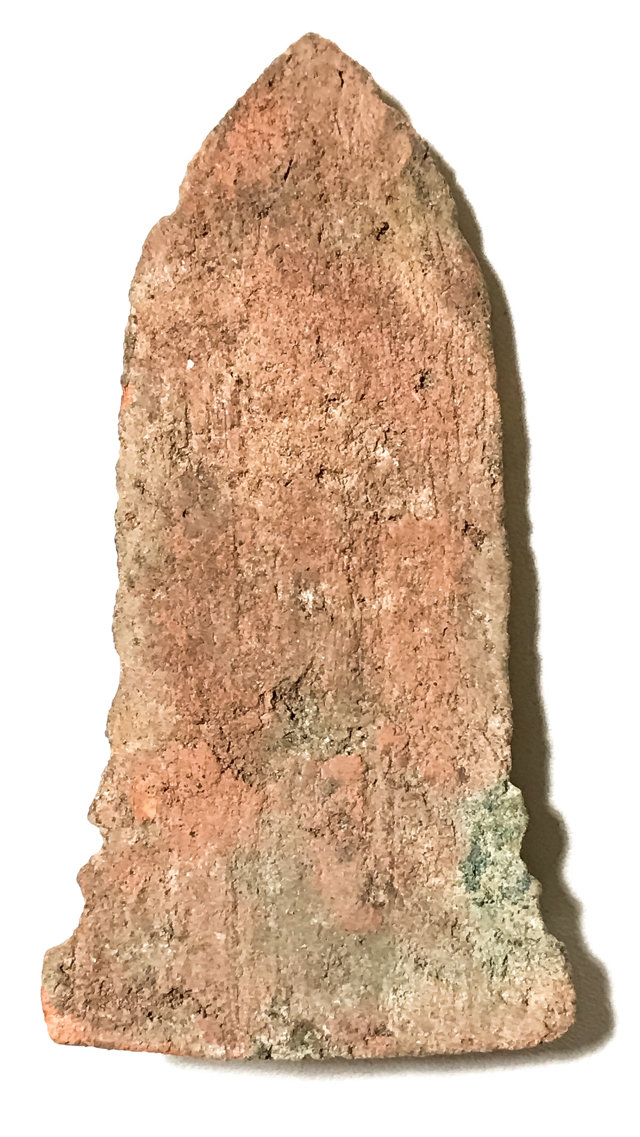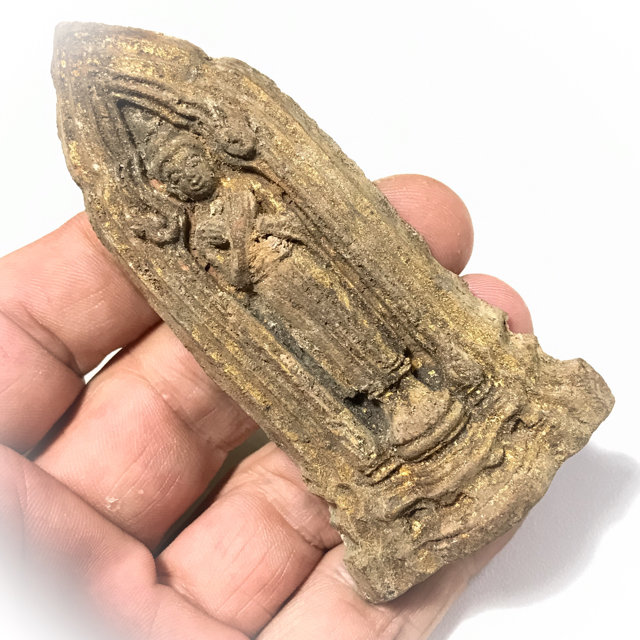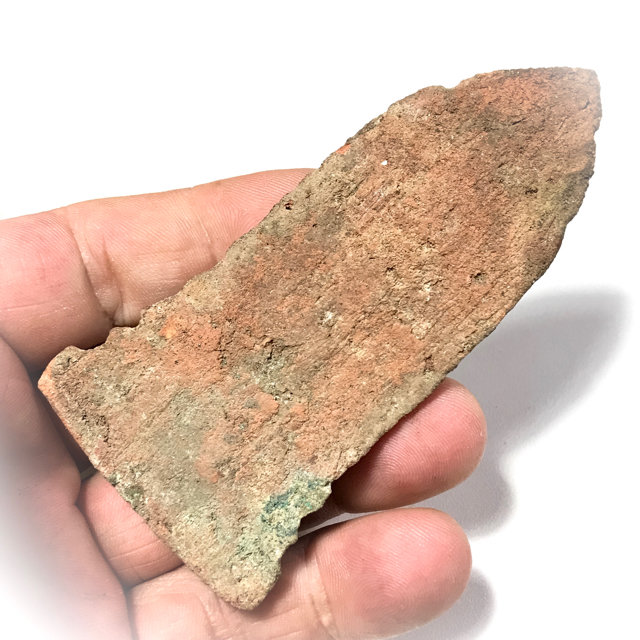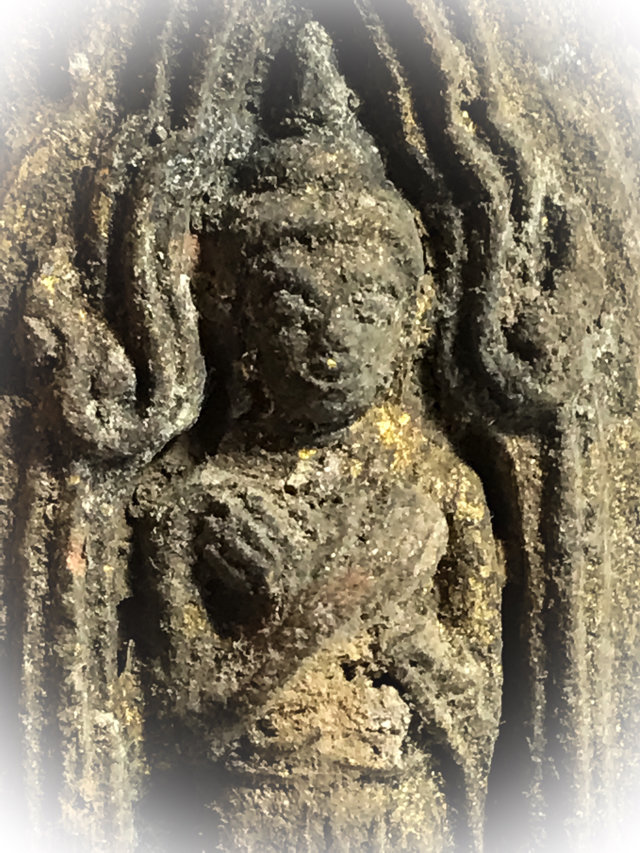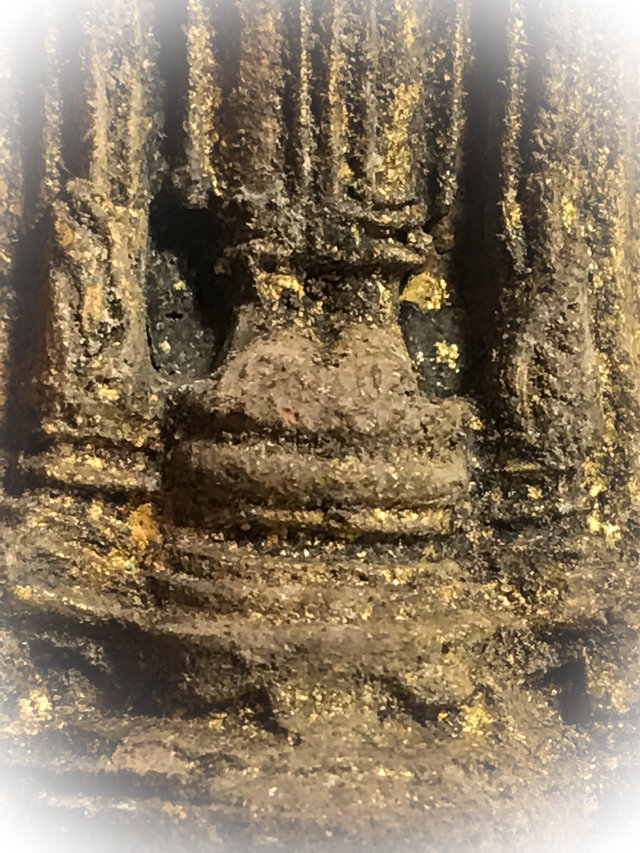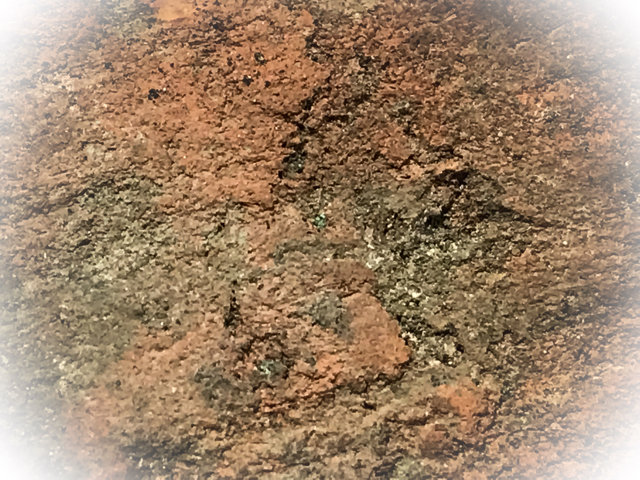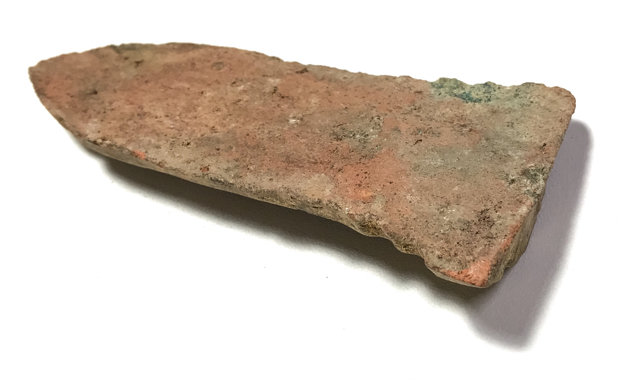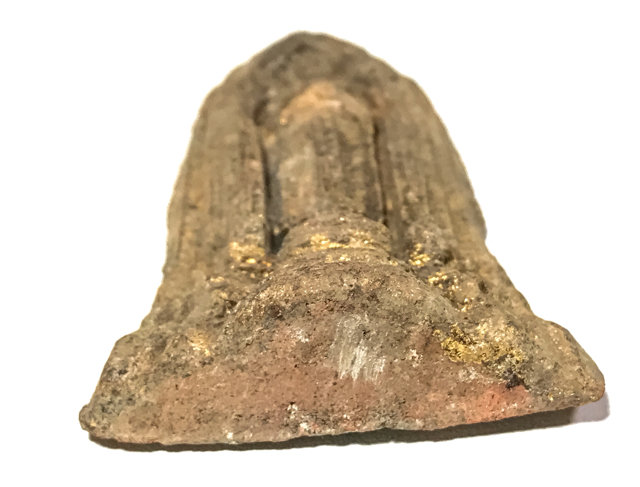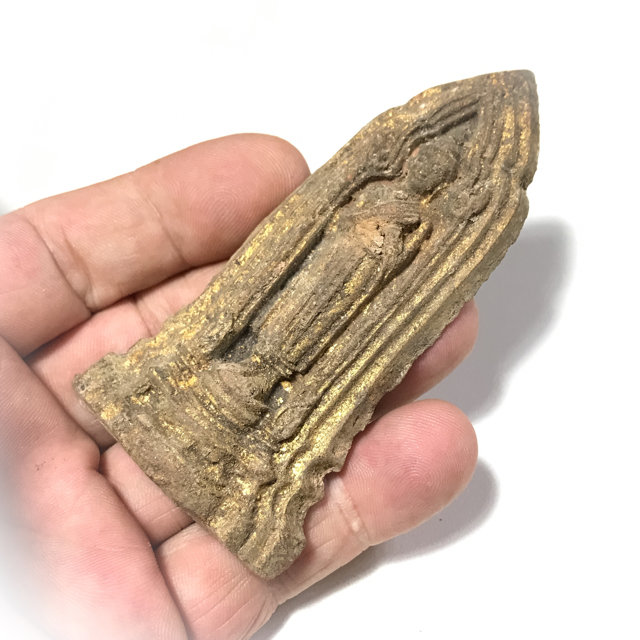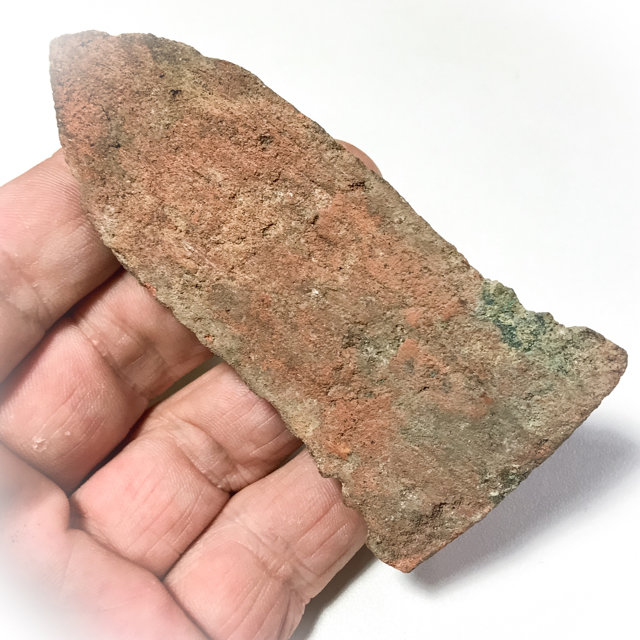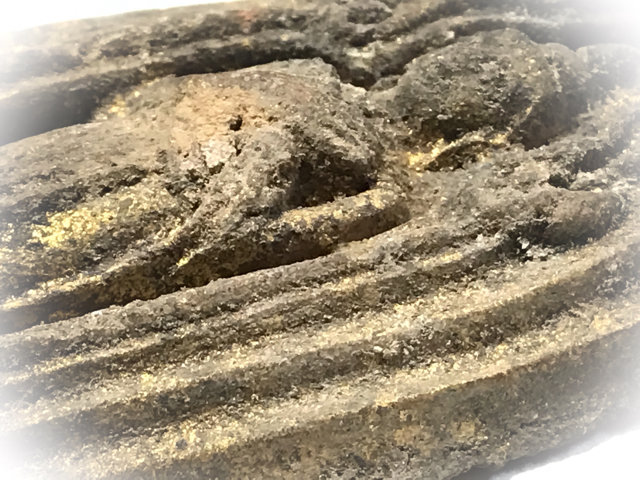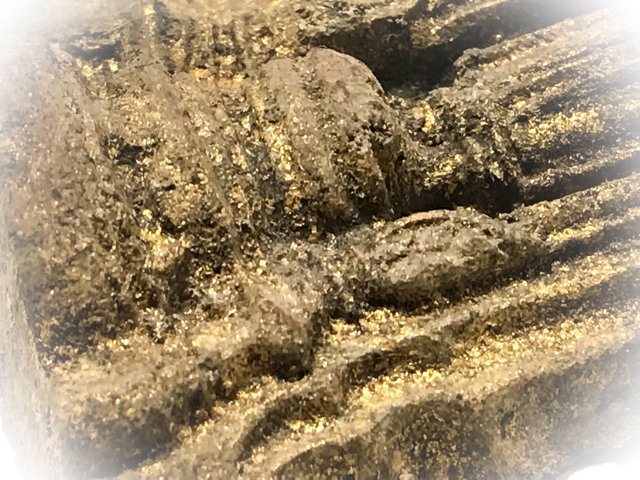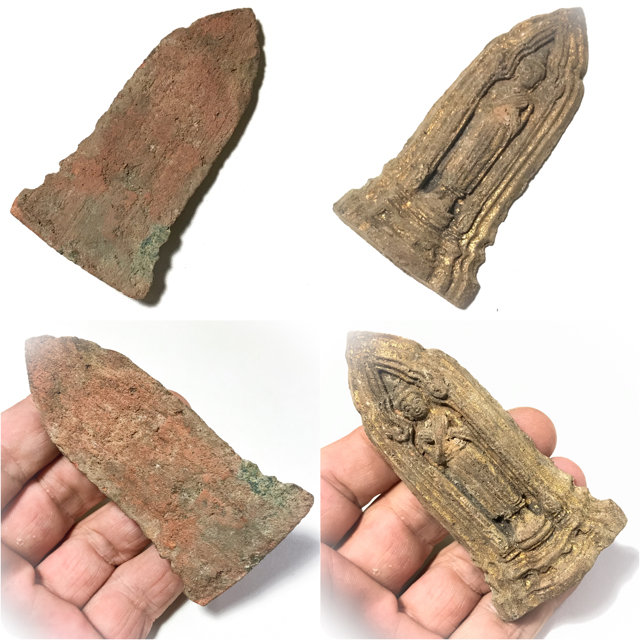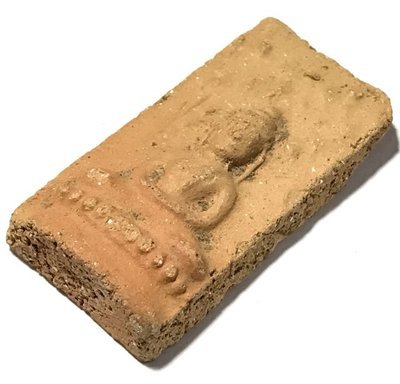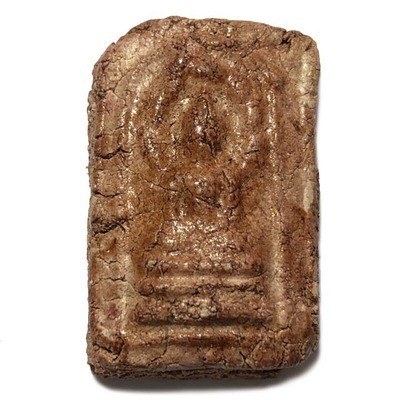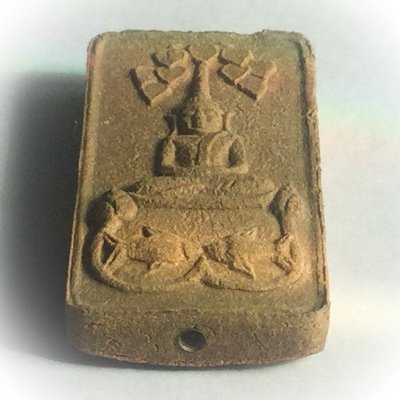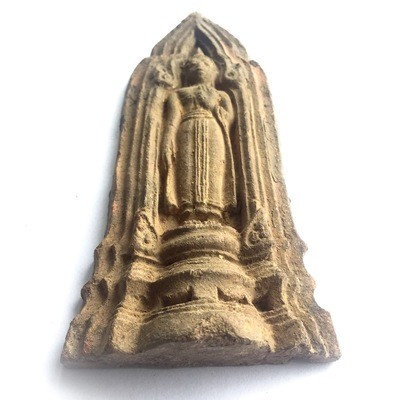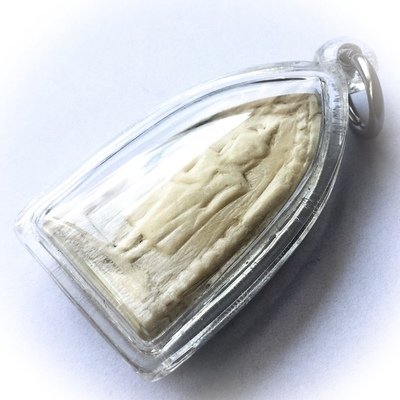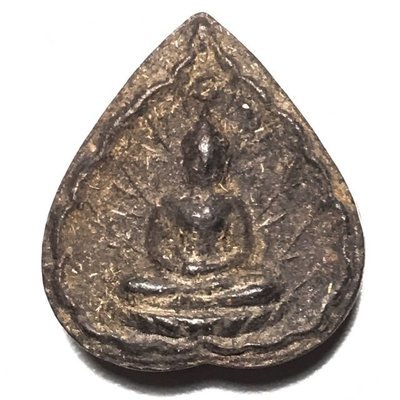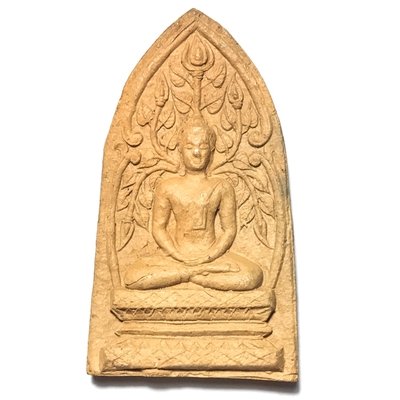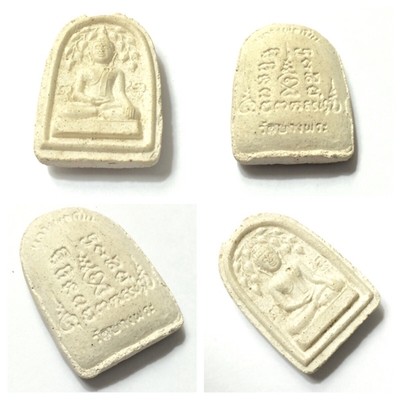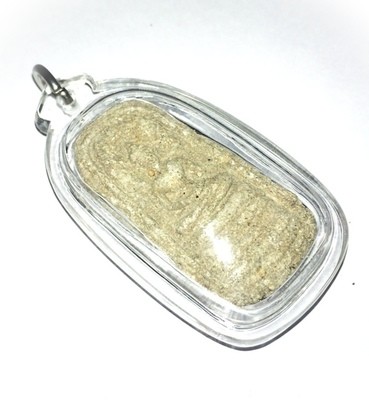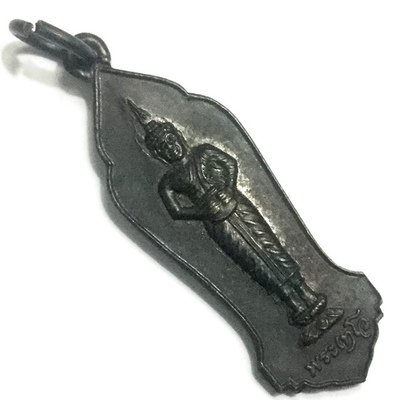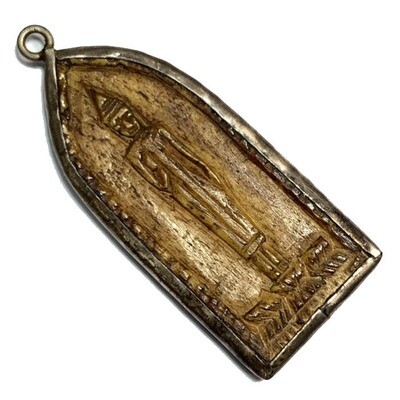
Ancient Amulet Store – Purveyors of preferred Classic Thai Buddhist Amulets for the True Devotee and Distinguished Collector
Discover the immensely deep and fascinating world of Vintage Thai Buddhist Amulets. Ancient Amulet is a long term established and internationally recognized Vintage Amulet Shop, and A Trusted Source for Classic Thai Buddhist Amulets for Devotees and Discerning Collectors, and is one of the many sub projects of informational sources created by Thai Amulet, Buddhism and Thai Occult Expert, Ajarn Spencer Littlewood . as part of his ‘Buddha Magic Project‘
Ancient Amulet provides authentic Antique and Rare Thai Amulets of the Pre and Early Post-Modern Era, of high esteem and Sacred Value, to revere, study and collect. Our Ancient Thai Buddhist Amulets are selected from the finest exhibits we can discover, and given diligent study and authentication processes. Our collection showcases time-honored amulets crafted by ancient masters, boasting captivating qualities and representing the esteemed Pra Niyom class. We offer authentic, highly valued ancient Thai Buddhist amulets from the pre and early post-modern eras, carefully selected from the finest exhibits and thoroughly examined. We invite you to study, revere, and collect these classic amulets from ancient masters, and to learn about their magical aspects and the art of amulet evaluation
Pra Kru Kone Samor Pim Pang Rampeung - 200 Year Old Ayuttaya Period Friday Buddha 2430 BE Royal Palace Hiding Place Find
Pra Kru Kone Samor Pim Pang Rampeung (Friday Buddha) Sum Ruean Gaew Nuea Din Phao - Ayuttaya Period Buddha Amulet from 2430 BE Hiding Place Find. The Ayuttaya Period lasted between 1893 BE, and 2310 BE, making this amulet well over 2 Centuries Old.
This Pang is of the Buddha is callled ‘Pang Rampeung” (posture of consideration), and is revered as the 'Birthday Buddha' of those born on a Friday, and is also prayed to on Fridays by those who pray to all the Buddhas of the days of the week. The Buddha stands with his arms crossed over his heart. His feet are placed close together. The posture represents an episode from the life of the Buddha, after his Enlightenment, when he considered the subtlety of the Dhamma, and pondered whether it was worth trying to tach, to human minds, hardly capable of understanding such a subtle truth as he had found;
After the episode where two merchants Tapussa and Bhallika had seen the newly Enlightened Buddha, made their offerings and left (these were the first two laymen ever to become disciples of the Buddha), the Lord Buddha rose from where he was sitting under the Rachayatana tree and moved to sit under the Acabhalanikaroda tree and spent time considering the wondrous and most subtle Dhamma he had realised.
He considered how difficult it was to undertsand, and the fact that it was almost impossible to grasp for the average mind. He then became a little doubtful that it was worth it to try to explain and teach to Human Beings, and declared to himself that he would not teach the Dhamma to others. At that time, Lord Brahma became aware of what the lord Buddha was thinking, and sent a host of Angels and Deities to go visit the Buddha under the tree he was sitting.
They went and paid reverence, and begged the Buddha to please teach the Dhamma to the people. To teach those who have dust in their eyes, and those who are devotees of the Buddha, in the hope that some may attain Enlightenment. The Buddha then took this into consideration, thinking of what previous Buddhas had usually done; namely once they attained Enlightenment, and before entering Nirvana, they would teach and preach the Dhamma and spread it widely for the sake of those who came after them.
The Buddha then contemplated whether there could be anyone capable of understanding the Dhamma he had realised, and thought of the various characters and personalities of different people on Earth. He saw there were people with rough coarse minds, average minds, and also fine subtle minds, with good hearts and merits made. Perhaps some of these might indeed be able to attain enough perfections and merits to finally be able to follow the Buddha’s footsteps and attain Enlightenment! He saw some people could be taught easily,
Some, with great difficulty, and other with Ease could understand, and others not at all. He thus compared them to Lotus flowers that are born under the water and grow in the water; Some flowers remain under the surface, some on the surface, and some rise above the surface. Those people who are like the lotus which has risen above the water and recieves the Sunlight will eventually bloom, and the flower which blooms will also have variations. Some people will attain the realisation of Dharma quickly and easily because they have low amount of cravings and desires, and made great merit in life.
Others will attain the Dhammma, but slowly – this type of person should still recieve repeated lessons of the basic principles in order to help condition the character until his practise is safely ensured and constant. This is how the Dhamma should be taught, in order to prevent the Buddha’s teachings to not be in Vain. The basic Dharmic principles should be given to all, with the exception of those compared to the lotus underwater, Soft Lotuses who will eventually become nothing but fish food.
At this point, the Buddha declared that he would remain on earth as a living Human Being until the day that the Buddha Sasana was founded and fully established to safley survive the passing of time, for the sake of those Humans who wanted to try to Enlighten. In remembrance of Buddha considering Teaching the Dhamma and establishing Buddhism for the sake of all beings, the Statue of Buddha in the pose of “Pang Rampeung ” (consideration) was created.
For your knowledge and for reference study, the different postures of Birthday Buddhas are as follows; Monday Buddha; Pra Ham Yati (forbidding relatives with hand/s outstretched) Tuesday Buddha; Pra Saayaas (Sayasana - Reclining Buddha), Wednesday Daytime; Pra Um Badtr (Holding Almsbowl), Wednesday Evening; Pra Welalai, Thursday Buddha; Pra Prok Po, Friday Buddha; Pra Rampeung (standing with arms crossed over chest), Saturday Buddha; (Pra Nakprok - Naga Throne), Sunday Buddha; Pra Thawaay Naedtr (hands crossed over the stomach).
The first discovery of these hiding place Amulets occurred in the time around 2430 BE, during the reign of his Majesty King Rama 5. His Majesty the King had ordered for the construction of the national Museum the area of the Royal Palace in Bangkok.
Various other major discoveries included the Temple of the Golden Mount, and Wat Pai Lom, where a batch was found under the Pra Pratan main Buddha Image in the Kuti Chamber of Luang Por Poon, where they must have been hidden at the beginning of the Ratanakosin Era.
The first ever find of these amulets however, were discovered in the ceiling above some of the throne seats such as the Rong Pra Tinang Siva Mukh Throneroom, and the Putai Sawan Throneroom.
Of those amulets found within the palace, most of which were made from Leaden Silver Mercurial Alloy, a large number of them were taken and sealed once more within the golden stupa of the Temple of the Emerald Buddha. Then, during the celebrations of 150 years anniversary of the city of Bangkok. They were moved to be stored beneath the 'Kone Dton Samor Pipek' (trunk of the ancient sacred Samor Pipek tree).
Most people forgot about their existence, until they were discovered beneath the tree and then reentered circulation. They were taken by Jao Khun Vorapongs, and given the name they possess today, after the place where they were rediscovered at the 'Kone Samor' (Samor tree trunk). Hence, the amulets are known as 'Pra Kru Kone Samor'.
The Pra Kru Kone Samor is a perfect amulet to study other famous clay amulets of Ayuttaya Period, such as the famous Pra Lp To Bang Grating Amulet, for the aspects and properties of the sacred clay, is representative of the same age and substance, and baking methods used. It can be said that the Pra Kru Kone Samor has many different color tones and textures to them due to the ancient baking methods and hand pressing methods varying the result of each individual votive tablet, which makes for a slightly difficult job distinguishing.
Various discoveries were found in the temple of the emerald Buddha, and at Wat Po temple. After the discovery of these amulets, most of them were taken into the care of the Ministry of Arts. But some of the employees and civil servants within the ministry took some for Bucha, and wearing. And hence, they began to get slowly noticed by the public, and once word got out and they became "the talk of the town", the Ministry of arts decided to release them for 'rental' (the Thai way of referring to the purchase of amulets), to the public.
So many people flocked to the ministry to receive these amulets, that the whole find was depleted very quickly indeed. After this word got out and this series became a nationally accepted and highly revered series of Ancient Sacred Thai Buddhist Amulets which I also have historical and national importance.
Since the first find, various other finds were made, in the Bangkok area and also in various places in the province of Ayuttaya. For example in the year 2506BE at the temple of Wat Cherng Ta, in Nontaburi, Bangkok, another discovery was made. And in the year 251O BE at the temple of Wat Saket (that is to say, the temple of the golden mount), yet another find was discovered inside the Chedi Stupa.
Also at Wat Pra Yura. However, only the baked clay Amulets were found in these of the temples. The silver lead smaller Amulets were only found in the Kru Wang Hnaa hiding place amulets discovery, the National Museum and Temple of Emerald Buddha. In any case these metallic versions, were so few, that most of them already have an owner who is not willing to part with his amulet.
Also, the very few which are still around, are also subject to a lot of fakery. It is the metallic smaller amulets, which have suffered from many forgeries and are very difficult to obtain, both because of the rarity, and all of the amount of forgeries.
The amulets themselves are found to be in various different forms, ranging from standing Buddhas, to seated Buddhas. The Buddha Images are seated or standing, within a crystal arch with Ganok Flame Decoration. These votive tablets are made in the artistic style of the Ayuttaya Period, most of them, are made from baked clay, and quite large (about the size of the palm of a hand).
For this reason we know that this series of Amulets came from the end of the Ayuttaya Kingdom Era, both because of their artistic design in Ayuttaya style, and obvious age, but also for the fact that the votive tablets were found in various hiding places in the province of Ayuttaya.
It is deduced, that, at the end of the Ayuttaya Kingdom when Thailand first became united by king Naresuan Maharach, and that the new capital city was decided to be built in Bangkok it's that time, that's visa me let's were taken to be buried in various edifices which were being built at the beginning of the construction of the city of Bangkok.
The national Museum and many of the buildings where these amulets were found, were also some of the oldest buildings in Bangkok, which also supports this evidence.
Apart from the baked clay versions that were also some very small numbers found in different materials, including Nuea Chin Ngern (alchemical silver mercurial leaden alloy), and other metals and sacred powder materials. However, most of them were made in baked clay, and the ones found in of the materials are extremely rare and also manyfold times more expensive than the baked clay versions.
That was quite a number of different models found which revolve around the eight different postures of the birthday Buddhas. There are two different Buddha images for Wednesday and all of the other days have one single Buddha image representing that day. This gives us a total of eight different votive tablets for the eight different birthday Buddhas.
That were also a few other postures, or images found, which were very far and few between. The most popular and rare of all of the different models of large size baked clay votive tablets, is probably the one which is popularly known as Taw Chompoo, which is a standing Buddha image in the posterior all of 'Pra Pratan Porn' (Giving blessings).
Below Image; a Master Piece Example of The Pra Kone Samor Pang Taw Chompoo Niyom (preferred) Amulet

The Taw Chompoo votive tablet is with Thai Ayuttaya Ceremonial Regalia, and was seen by those who possessed on to produce extremely powerful Kong Grapan Chadtri Klaew Klaad Effects. Another very popular model is the 'Pra Khone Samor Pang Sum Prasat' which is a wider model inside a Tryptich Palatial Arched Frame, seated in Mara Vichai Posture (Subduing Mara touching the Earth).
Below Image; An incredibly beautiful example of the Pra Kone Samor Pang Sum Prasat Amulet
Both the immense beauty and the many stories of miraculous powers in connection with this Amulet resulted in this particular model of votive tablet to become the rarest and most popular of all of the baked clay versions. The most highly sought after and prized however, are the silver-leaden mercurial alloy amulets, which are much smaller and more portable to wear and are also much rarer to find, which has also influenced the very high price they carry with them.
Various postures wre also found to exist with this model, the most popular of all being the 'Pim Hoy Prabat' (Buddha seated with his right hand touching the earth hanging over his right knee). It is said that this amulet is also owned by his Majesty the King. In olden days it has been said that the Pra Kone Samor, was often used to hunt around the Necks of War Elephants and War Dogs, and that they would be protected from the lances and blades of the enemy when stampeding into battle.
The Pra Kone Samor was also one of the protagonists and reasons behind the Americans and the Vietnamese both calling Thailand's soldiers 'Taharn Phī' (ghost soldiers). This was because it was saying that sometimes the Thai soldiers would be outnumbered even 10 to 1 but that they would be unharmed buy bullets and often be completely unscathed despite being outnumbered.
In modern times it is not often that we have to go into battle anymore, and soul in times of peace it came to happen that Thai Buddhist people began to use these amulets, to put on their altars for worship,and to place them inside wooden frames as religious art masterpieces in the homes of the wealthy classes.
These ancient baked clay votive tablets, are most recommendable to place in your altar for Prayer and Bucha. Apart from being sacred and powerful authentic ancient Amulets, they are also extremely pristine museum pieces of historical and religious importance, as well as artistic importance, as far as Periodic Buddhist art forms are concerned.
We like to consider this class of Amulets as being not only Master-Class Amulets of highly sacred origins, but also to be extremely important historical artifacts. They can be considered classic family heirloom Amulets which should be passed on through the centuries for generations within your family, and can be seen as part of your family inheritance and heritage especially if you are Buddhist.
That are already of an age of around two centuries old, and if properly taken care of and prayed to properly, should still be around in another thousand years. The Pra Kone Samor, is considered a 'Pra Nirandtarai' (free from all dangers) Votive Tablet, with immense Kong Grapan Chadtri and Klaew Klaad Powers Who would not be proud and instilled with faith to possess such a sacred, ancient and historically important votive tablet?
Kata Pra Prajam Wan Sukr - Frida Buddha Chanting
Abp-Bpasannehi Naatassa Saasane Saatusammadte Amanusanehi Jandehi Sataa Gippi Sagaaripi Bparisaananja Dtassannang Mahingsaaya Ja Kudt-Dtiya Yantesehi Mahaawiiro Bparidtandtampanamahe
Thai; คาถาสวดบูชาพระประจำวันเกิดวันศุกร์
อัป ปะสันเนหิ นาถัสสะ สาสะเน สาธุ สัมมะเต อะมะนุสเนหิ จัณเฑหิ สะทา กิพพิ สะการิภิ ปะริสานัญจะ ตัสสันนัง มะหิงสายะ จะ คุตติยา ยันเทเสหิ มะหาวีโร ปะริตตันตัมภะณามะ เห ฯ
